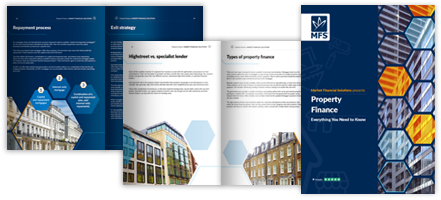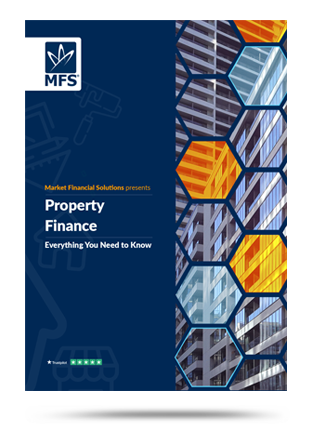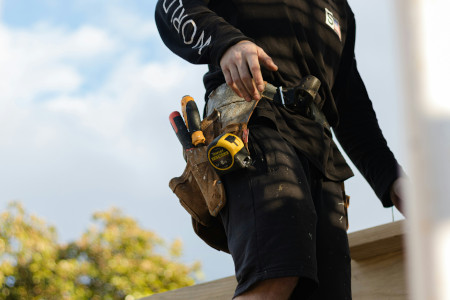Disclaimer
Market Financial Solutions are a bridging loan and buy-to-let mortgage provider, not financial advisors. Therefore, Investors are encouraged to seek professional advice. The information in this content is correct at time of writing.

Gentrification in the property market and our communities has been a contentious issue for some time now. The process of trying to improve or upgrade a location may not be as simple as it seems.
But exactly what is gentrification? Is it an evitable element of the property market, or can it be avoided?
We will attempt to break down the key details in this blog. We will provide some context and perspective to this issue.
What Is Gentrification?
Generally, gentrification refers to the transformation of a location or community from relative low value, to high value. The term usually has negative connotations when it’s raised.
The Cambridge Dictionary[1] defines gentrification as: “the process by which a place, especially part of a city, changes from being a poor area to a richer one, where people from a higher social class live.”
Gentrification tends to happen over time. Few areas transform overnight. It may start with existing residents moving out to find “better” places to live. This can leave a location desolate and send prices down.
Eventually, up and coming professionals and/or couples may start looking for new places to live that are affordable. An area with untapped potential can be spotted and soon, in the press and beyond, it’s touted as an up-and-coming hotspot. From here, businesses can also utilise the low property prices to target the newly affluent locals. Cliches may include independent coffee shops, bakeries, and even cereal cafes[2].
The later has proven especially controversial in London, where gentrification is a particularly big issue.
Gentrification London – the Poster Child for Urban Regeneration?
Certain areas in London have gone through dramatic transformations in recent years. Within the space of a few decades, some neighbourhoods can completely change, and look almost nothing like what they once were.
Canary Wharf is a prime example. In the 1970s and 80s, London’s docklands were largely derelict as factories abandoned the area. Now though, Canary Wharf (baring recent covid related downturns) is one of Europe’s biggest financial and commercial hubs[3].
All told, there are at least 53 London areas that have been substantially impacted by gentrification over the last 15 years, according to research from Trust for London[4]. Tower Hamlets, Southward, and Brent have experiences “particularly intense” gentrification according to the organisation, where average incomes increased by 11% between 2012 and 2020.
Taking the very top spot was Spitalfields, in the heart of London’s East End, famed for its historic market[5]. But, Spitalfields market eventually had to move to Leyon in 1991 as it couldn’t accommodate the area’s expansion plans. Reflective of this: average Spitalfields property prices were just over £370,000 in 2014. In 2024, they reached £534,000[6].

Is Gentrification Good or Bad?
The answer to this question depends on who one asks. Locals who grew up in an area are unlikely to welcome gentrification on their doorsteps. It raises prices, and can push people out. But, those who invest in an area primed for gentrification early can do well.
There are a few key issues that emerge whenever gentrification happens. It tends to raise costs for locals, and erodes cultural cohesion the areas. Subjectively, there is a loss of historical character, and it can lead to socioeconomic disparities.
Cultural Tensions and Community Pushback
It can also lead to straight up conflict. Just last year, hundreds of locals in Walthamstow signed a petition against the opening of a Gail’s bakery in the area – a popular chain with middle class consumers[7]. Outside of London, sudden interest in places such as the Cotswolds has angered locals, who argue their homes are becoming the playground of the wealthy[8].
But, it can be argued that sometimes gentrification is needed to bring a local economy back to life. Gentrification can lead to economic growth, and increased property prices for homeowners. Ultimately, pushing back against gentrification may be relatively futile. No one builds things in order to make an area worse. A point made by some locals, was that those who pushback against gentrification ‘may be looking back at the past with rose tinted glasses’.
Chris Ross, a local celebrity known as the East End Poet, voiced this in a recent piece with the BBC[9]. He said: “People say, ‘Oh, I miss the old East End.’ Yeah, what do you miss? The outside toilets or the old tin bath that you used to drag in, in front of the fire every Friday night and then take turns to get in? You know, is it that that you miss? No. No, it’s not. You miss being young; we all miss that.”
For property investors worried about the downsides of gentrification, all they can do is ensure the investments they’re making adhere to the local culture, enhance it, and don’t take away from it. Once they’ve figured out how to do that, Market Financial Solutions can help with the financing side of things.
The Complete Guide to
Property Finance
Everything you need to know
- Foundation & different finance types
- Useful tools
- Apply them in real life
- Market insights & more
[1] https://dictionary.cambridge.org/dictionary/english/gentrification#google_vignette
[2] https://www.theguardian.com/commentisfree/2014/dec/15/cereal-killer-cafe-gentrification-media-hipster-brothers
[3] https://canarywharf.com/wp-content/uploads/2020/05/canary-wharf-whats-on-canary-wharf-through-the-ages-ss20.pdf
[4] https://metro.co.uk/2025/04/03/map-reveals-gentrified-london-neighbourhoods-last-15-years-22844456/
[5] https://www.spitalfields.co.uk/spitalfields-history/
[6] https://www.kfh.co.uk/east-london/sold-data/
[7] https://fortune.com/europe/2024/08/14/london-locals-go-to-war-with-upmarket-british-bakery-chain-gails-over-gentrification-and-its-right-leaning-chairman/
[8] https://www.telegraph.co.uk/money/property/what-really-like-live-cotswolds/
[9] https://www.bbc.co.uk/news/articles/c0rqr987187o





